I’m a huge fan of superhero roleplaying games. It is my favorite genre to play in and I’m constantly on the look out for new games in the genre. I’ve frequently stated that there was a time when I owned every superhero game on the market. That’s no longer true, but I do own a lot and a lot of them are very interesting. Tobias Radesäter’s Supercrew definitely falls into the interesting category.
Let’s Talk About Supercrew!
Introduction
Every now and then, there comes along a product that manages to simultaneously appeal to several of my obsessions. The Supercrew (available at DriveThruRPG, Itch.io, and Lulu) roleplaying game by Tobias Radesaeter is one of those products. The game combines my interest with the indie game movement with my obsessive need to own every superhero roleplaying game ever published. As numerous re-reads of Superhero 2044 (my video review is below) prove to me time and time again, the targets of my obsession do not always lead to highly playable experiences, but they do lead to new insights.
The superhero genre features characters of near unlimited potential, and who possess a vast array of capabilities. Any game designed to emulate the feel of the source material faces a daunting challenge.
After all, how does one design a game that can simulate an almost infinite collection of powers and abilities, yet is also as fast and exciting as the source material being emulated?
It's not easy to do, and it is one of the reasons that some successful superhero systems are also successful "universal" systems. For a while, it seemed as if all decent superhero systems were also universal systems. The indie game movement, which featured games like Capes (available in print from Lulu), finally proved that being universal wasn't a necessary condition of a superhero game and that games could be designed based on emulating the feel of comics without granularly emulating the physics of them.
The Design Philosophy Behind Supercrew
Capes is a superhero game that emerged from Ron Edwards’ narrative focused game design community at indie-games. This community was responsible for the development of a lot of story games that ended up influencing a lot of what is still going on the indie gaming space with games like Apocalypse World (influenced by InSpectres), Blades in the Dark, and Critical Role’s Candela Obscura. Design choices in these games focus more on how a particular mechanic can help to create a collaborative "playing story" rather than a quantified gaming representation of "reality." Often these games empower player agency so much that they become “GM-less” games. To be reductive for a moment, story games have a “Narrativist” rather than a “Gamist” focus.
The GNS design rubric that discusses the tension between Gamist, Narrativist, and Simulationist games builds upon the ideas of older discussions of game design and intent, such as The Fourfold Way of FRP posited by Jeffrey A. Johnson in issue #11 of Different Worlds magazine in 1980.
Supercrew takes a fairly strong narrativist approach to the superhero genre in it design choices, and even makes one small quip regarding gamist style games, and even presents its rules in a narrative format.
Supercrew's thirty-page booklet presents the games rules in a comic-book panel format. The first game to attempt this approach was the highly criticized He-Man and the Masters of the Universe RPG by FASA. It's a novel approach to introducing roleplaying concepts and mechanics, and in the case of Supercrew is done in an effective manner. The rules are presented in a logical and engaging manner. They are also very easy to understand, making this game a potentially great introductory roleplaying game -- in addition to its potential use as a narrative rpg for experienced gamers.
Game Concept
Supercrew begins with an interesting premise as a game within a game. The central conceit of Supercrew is similar to that of Villains & Vigilantes in that all of the superheroes designed by the players are their own alter-egos. As the game explains it, "The players play super-powered versions of themselves. Each adventure starts with them playing a role-playing game when they hear about some kind of emergency they have to stop." You read that right. The players are playing characters who are playing a roleplaying game that gets interrupted and needs their superheroic intervention.
While the conceit of characters as player alter egos reminds me of the character design system for the revised edition of Villains and Vigilantes there is a subtle distinction that makes Supercrew's approach was novel. This distinction comes where the rules describe Supercrew as a game where the "characters" have shown up to play an rpg, only to have it interrupted, and a number of wonderful uses for this game popped to mind -- this is before I read a single rule. To be fair, this signals that the game might be designed more for one-shot rather than campaign play, but it’s a fun conceit.
Every group has players who show up late, or cannot make it to a particular session. If your group is playing in a long term campaign, you often don't want to continue the adventure without the player as it could make the player feel left out as their characters don't earn as many experience points or miss out on key plot points. You also have to consider the feelings of those players who did show up. They are there to have a good time and to play a game. If your group agrees to use Supercrew as the backup campaign, it's central conceit is perfect for these occasions. Let's say Jim doesn't show up to your regular D&D campaign. You begin the session as normal, "when we last left our heroes," but somewhere in the middle of the first encounter you do your best radio static impression and blurt out "News Alert! Baron Ravenblood and Persecutus are holding the city hostage threatening to destroy the Gas Company building unless the mayor wires $1 billion into their bank account by 3pm." The players grab their Supercrew character sheets, and their "characters" excuse themselves from the D&D game to fight for great justice!
Sounds like fun, but does the system work?
The Game System
Characters in Supercrew are constructed using three main abilities and three tricks which are particular uses of these abilities. The powers are ranked from 3 - 1 in order of power. Three is the most powerful ability, two is the most frequently used ability, and 1 is the least powerful ability. It doesn't sound like a lot of powers to give a character, but it actuality this is a pretty robust system.
For example:
Christian wants to make a character based on everyone's favorite Flight, Invulnerability, and Super-Strength character. To avoid copyright attorneys suing his game group, he decides to name the character Superior! He give the character the following powers Heat Vision, Inert_Gas-ian Physique, and Flight. He states that Heat Vision is Superior!'s most potent ability (as is often described regarding our favorite FISS character, though rarely believed) at rating 3. Inert_Gas-ian Physique, Superior!'s most frequently used power, is given a rating of 2. Finally, Christian gives Flight a rating of 1.
Inert_Gas-ian Physique is a broad descriptor that encompasses super-strength, super-speed, x-ray vision, super-breath, and invulnerability. There is no reason to quantify each individual power, as would be done in more granular systems, since the broad descriptor's effectiveness is determined by the associated rating.
The effects of powers are determined by the roll of ordinary six-sided dice. The player rolls a number of dice equal to the abilities rating. Those dice that have a result of 4 or greater are considered successes, lower results are considered failures. This is a system similar in basic structure to Burning Wheel or White Wolf's World of Darkness systems where pools of dice are rolled and successes counted based on the results of individual dice.
The game enforces the use of ineffective powers, and limits the usage of the most potent powers, by requiring that heroes spend "hero points" in order to activate the rank 3 power. The only way to acquire hero points is to either use your rank 1 power or to be knocked unconscious in a battle. Each of these gives the character a hero point that may be spent later to activate rank 3 powers. This is an elegant design choice that undermines overt power-gaming where players would minimize/maximize abilities to tweak a game system in their favor and hold more "power" than other gamers. In this system, that is relatively impossible. Even if the player chooses a broad ability descriptor, like Superior!, since how an ability is used is determined when the player's describe what they are doing the broad descriptor is no more useful than the narrow one. After all, the Shade Knight can apply his "Keen Intellect" descriptor just as broadly as Superior!'s Inert-Gas-ian Physique.
For any given task, the Game Master sets a success threshold. The individual character can only contribute toward passing that threshold, once per round or once per task for certain tasks. Teams must work together to succeed at fighting earthquakes and burning buildings.
In combat, and in other situations, the player first states what ability they wish to use. They do not describe how the power is used, or its effects, until the number of successes achieved is known. In an upcoming “Let’s Chat About” covering the Dragon Age RPG by Green Ronin, I will discuss how Dragon Age's stunt system channels play to create more narrative combats. Supercrew's system is attempting a similar effect here using a “roll before you describe” philosophy. The benefits of this kind of system are discussed at length in an excellent article by Will Hindmarch at GamePlayWright. Once the player knows how many successes the character has achieved, and how many total successes are needed for an action, that player -- whether he completed the task successfully or not -- describes what happens. This game is very much about the player, knowing the results, creating the narrative regarding how his/her character succeeded or failed. Typical of many modern narrative games, this player empowering approach can be disorienting or empowering depending on your group's preferred method of play.
The combat rules are an extension of the basic task resolution system, and the game provides some excellent examples of how they would represent villains, groups of thugs, or hazardous events like building fires.
The system works and it looks fun. Simple but still able to simulate a broad array of activities, what designers often call "robust."
Criticisms of the Game
I have two major, and one minor, criticisms of Supercrew.
While the game provides some examples of how they would represent villains, thugs, and hazards, the game provides no guidelines or benchmarks to help the game master. Experienced game masters may not technically need these in order to run a game, but they would be exceedingly helpful. This is an even larger flaw when considering the fledgling game master. The game’s rules and concepts are perfect for the new gamer, in addition to the experienced gamer, but the new gamer needs more assistance when creating opponents for their players. Some comments regarding balancing encounters, more than just the examples, would have been greatly appreciated.
The game also lacks any real online support, which is tragic as the game deserves more. The rule book says to visit the Kaleidoskop site for character sheets etc., but that site has disappeared into the ether and is only available in via the Internet Wayback Machine. The new Kaleidoskop website doesn’t have the support materials that existed at the old site and even when one does pulled the archived information the majority of game aids are in Swedish. For example, their Hjältegalleri (Gallery of Heroes) which features a number of characters created using the system is entirely in Swedish. It would be helpful to have English versions of the characters. While it isn't difficult to figure out what Gravitationskontroll or Noll Friktion are in English, Osynlighetskappa is another matter entirely. Thankfully, Christopher Brackett at A Rust Monster Ate My Sword has designed an excellent character sheet for use in the game. Since that pdf is also lost to the ether, I’m providing pdf copies of the Official and the Rust Monster character sheets below.
Lastly, and this is a minor quibble, the game's prose isn't quite funny enough. I would have liked more jokes. Given the entertaining cartoony art in the rulebook, some more jokes would have been appreciated. Maybe it's just the translation that lacks the humor, but I'd have liked more.
Additional Support Material
Supercrew House Rules by Christopher Brackett
Christopher Brackett also designed some House Rules to expand the game and create room for more campaign style play than the main rulebook prompts. I think they need a bit of work and I’ll be covering and refining them in a later post because I think this is a game worth developing.
The Fortress of Solid Rules -- A Supercrew Fansite
The Fortress of Solid Rules a relatively active fansite dedicated entirely to using the Supercrew game system. It’s an interesting website that has a ton of ideas ranging from statistics for DC Animated Universe characters to examples of how to use Supercrew to run a 1001 Arabian Nights campaign. So much for my claim that Supercrew isn’t a universal system.
The Supercrew Papers
The Super Crew Papers provides statistics for 21 characters using the Supercrew rules system. It’s a relatively no frills site, but GMs can always use more villains and heroes for their games.
Flintlocks and Witchery
James T. Hook reviewed Supercrew on his Flintlocks and Witchery blog in 2020. IN that review he provides statistics for Captain America and Rorschach. It’s interesting to me that he selected these particular heroes as they are at the “street” or “street-plus” level (Rank 2 to 4 in the new Marvel Multiversal Game).
One of the great things about Supercrew is that it handles all levels of superhero on “equal footing.” While the person who wants to know exactly how strong The Hulk is might balk at that, it does reflect the “the person who is writing the book determines who wins the fight” rule that describes most of comic book history.
Final Thoughts
In conclusion, I think that this is an excellent game at a reasonable price. It isn't likely to replace Savage Worlds' Necessary Evil campaign in my game rotation any time soon, but I think I'll be trying to fit it in when some players don't show up for our regular sessions. I’ll certainly be playing around with the House Rules to see where I think they add depth to the game.
On a side note, I really wish some of the early professional efforts where as clearly explained and thought out as this gem.
What’s a game that you think is underrated that you’d like me to cover in a future post/video?


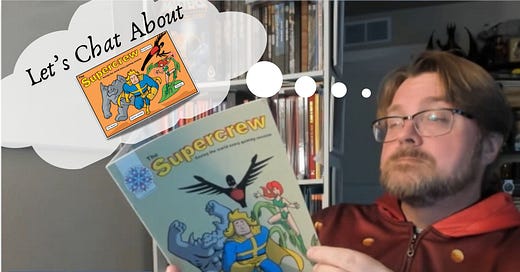


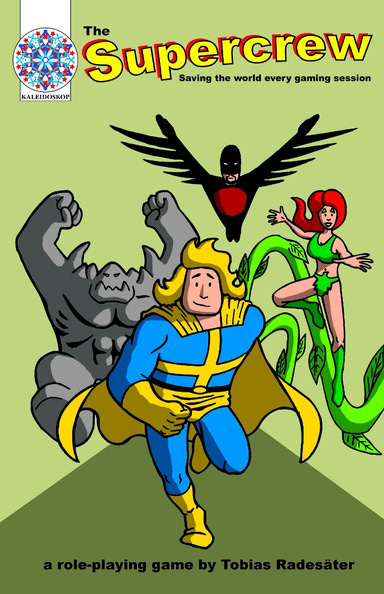
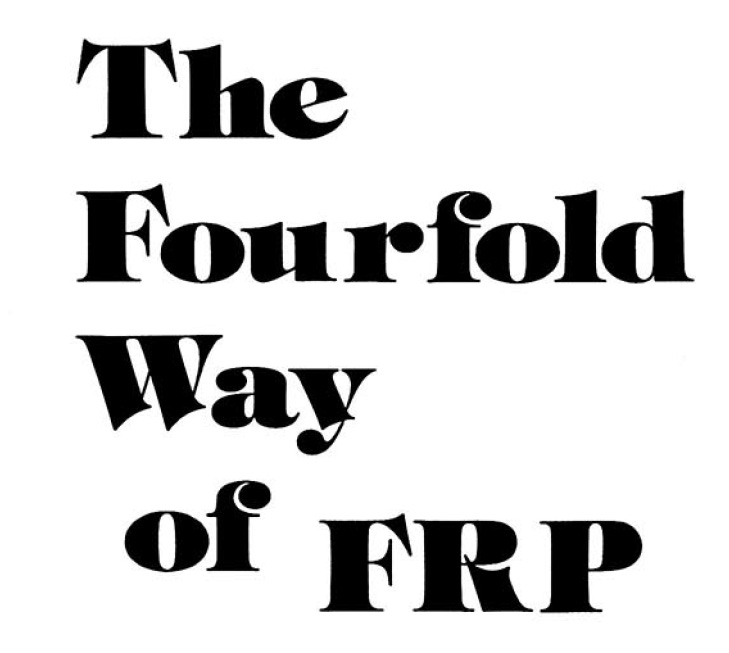
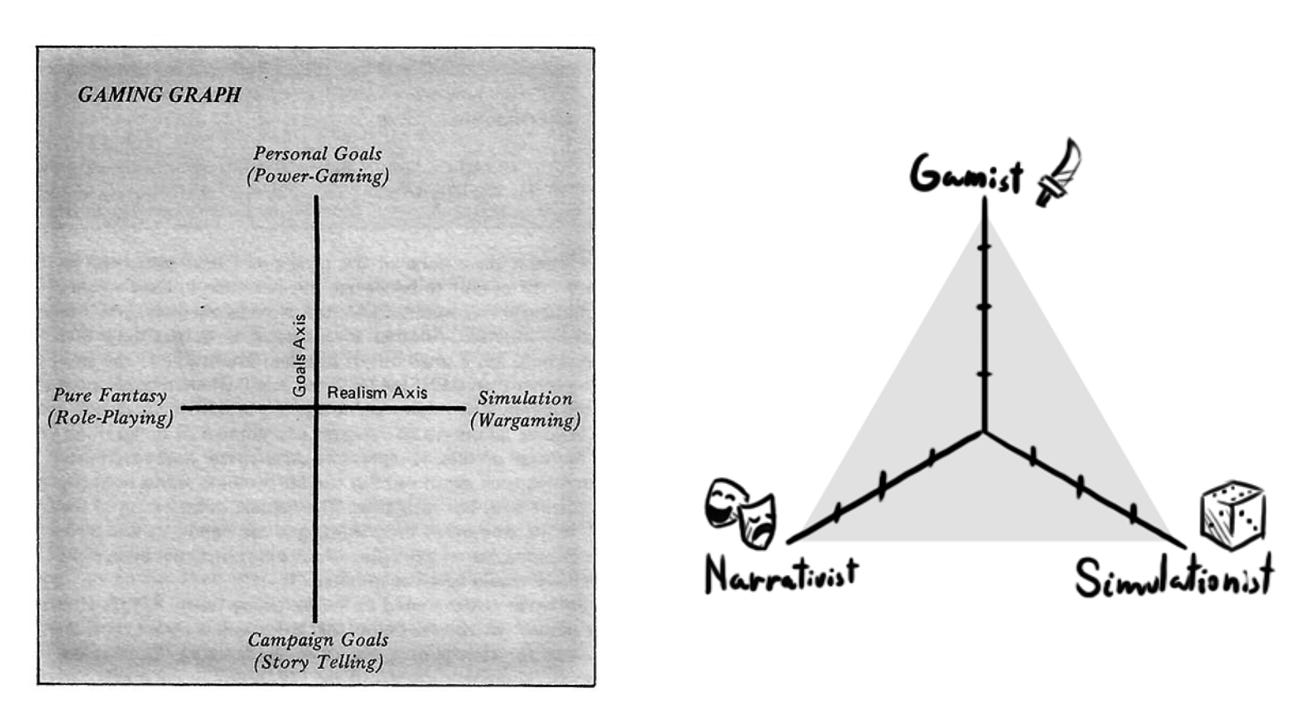
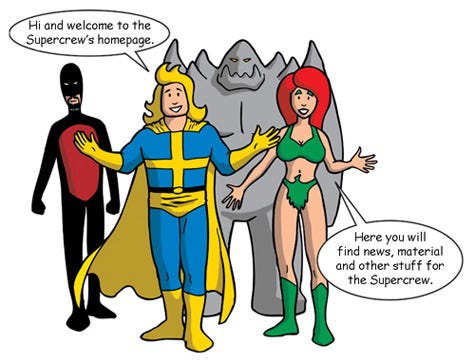
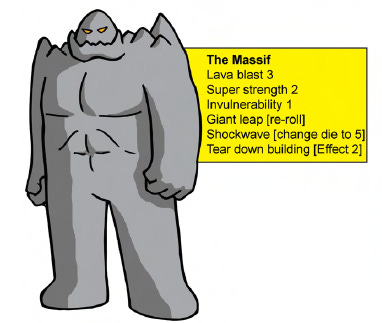
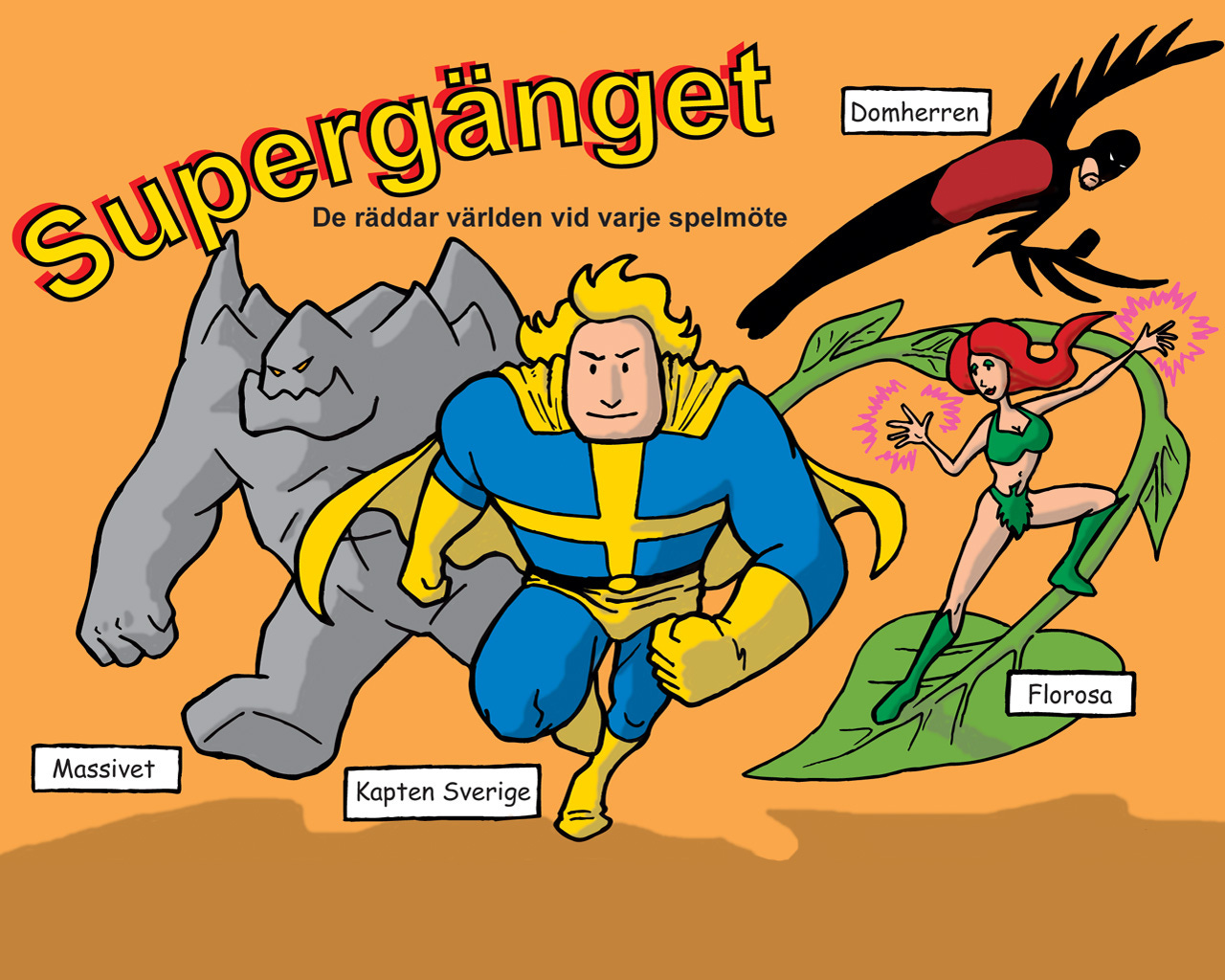
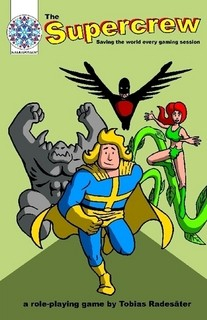
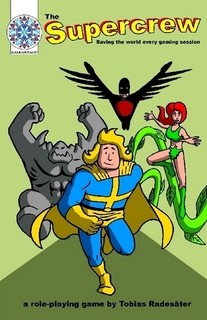
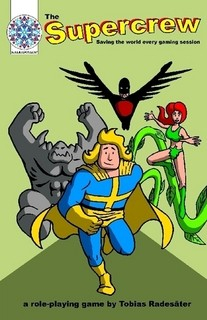
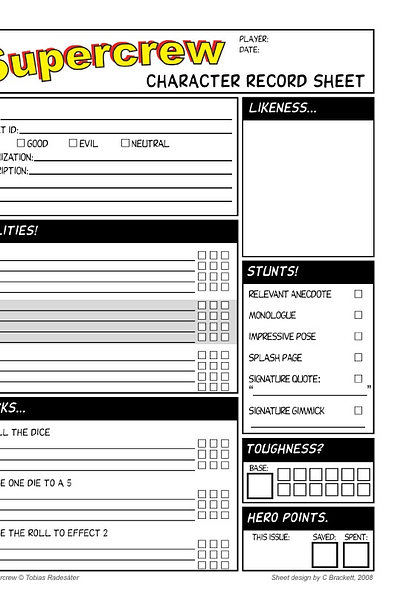


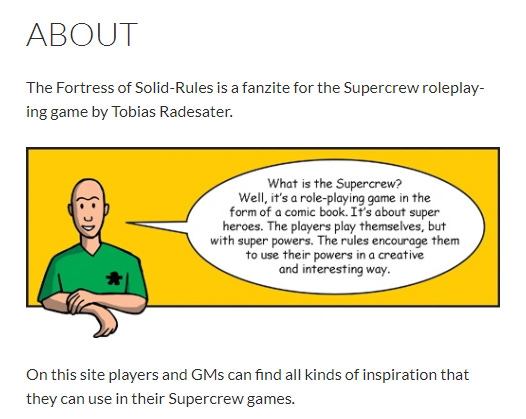


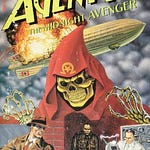
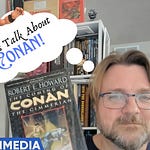
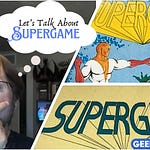


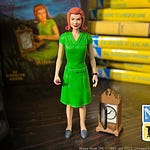
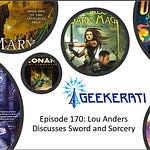
Share this post